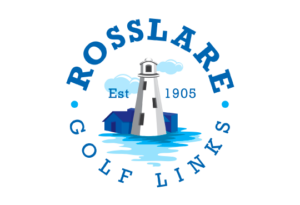The flora and fauna of Rosslare Golf Links was well documented by Jason Monaghan in the book ‘Fairways of the Sea’ written for our centenary celebrations in 2005.
Jason outlines the process of active dune formation responsible for creating the unique links land on which our course was built and outlines the specialised flora and fauna that inhabit that unique location.

He noted ‘Most of the ecological interest of the course occurs in areas away from the fairways so the amount of wildlife you see is inversely proportionate to how well you play’ ‘Interesting plant life (and other wildlife) is found in the less intensively managed areas off the fairways. This is partly due to the fact that many dune plants are adapted to survive in low nutrient conditions. This vegetation is the green scaffolding on which everything else (in the dune system) is based’.
Sand dunes ,particularly the Fore Dunes’ represent a harsh environment where water and nutrients are in short supply – species present are dune specialists adapted to the prevailing environment’.
‘Looking inland from the sea to the ‘Back Strand’ the golfer effectively travels in time from the bare sand of the newer Fore dunes to the older Fixed Dunes and Heath finally arriving at the areas of scrub where the soil approaches fully terrestrial conditions’.
‘The Fore Dunes are dominated by Marram grass. This rough grass is responsible for building up the height of the dunes and requires a continual supply of mobile sand to maintain its vigour’.
At Rosslare this process of dune formation has been greatly aided by the installation of sand trap fences’ (and the addition of coastal protection rock revetment in the 1990’s)
‘Fixed Dune areas make up most of the course. These older stabilised dunes are characterised as having more or less a continuous cover of vegetation with accumulated humus in the soil. The herb rich fixed dunes are important foraging habitats for many species of bumblebees, butterflies and moths.’
‘Dune scrub is a natural consequence of succession and in the absence of grazing by animals or regular mowing much of the older fixed dunes and heath turn into scrub or woodland typically consisting of gorse, blackthorn, bramble, burnet rose, creeping willow and hawthorn’.
‘At Rosslare it is the invasive non native Sea Buckthorn that is the dominant scrub tree. This species which is native to southern England without proper control can become a conservation problem as it alters the natural vegetation of the dunes reducing species variety and diversity’.
Rosslare Burrow is an integral part of a larger coastal and estuarine complex Wexford Harbour and Slobs. This complex is a natural havan for many bird species and is second only to the Shannon and Fergus estuary as Ireland’s most important wintering water fowl site’. Up to 1000 Pale Bellied Brent geese feed in winter on the Back Strand.
The wooded and scrubby areas of the course are suitable habitats for many mammal species including fox, badger, red squirrel, stoat and hedgehog.
Traditional grazers of the dunes are the Irish hare and rabbits.
Out on the harbour and visible from the ‘Burrow’ course are up to 200 grey seals along with a few common seals.
‘Proper management is crucial in maintaining the biodiversity of the course. Rosslare golf course has a very natural feel to it and relatively few non -native species present. There is a policy to conserve or enhance wild areas. In the absence of grazing mowing is the conservation management tool at Rosslare with different lengths of cut giving different types of vegetation.’
‘Dunes are a special but limited resource. The need for both protecting such remnant wild areas and encouraging wildlife on existing links courses is crucial’.
Rosslare Golf Links is the heart of one of Ireland’s most important wildlife areas and has wildlife firmly at its own heart.


